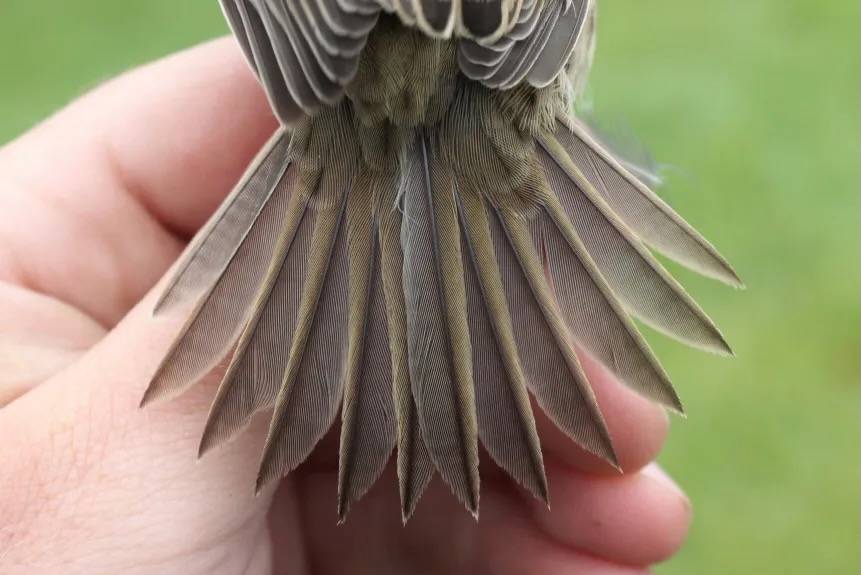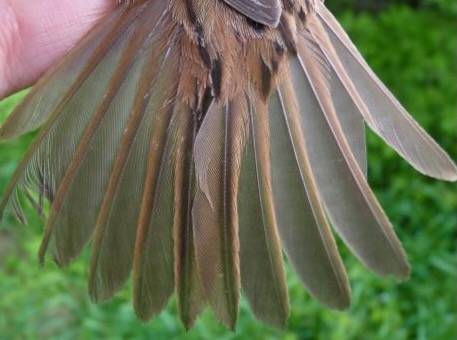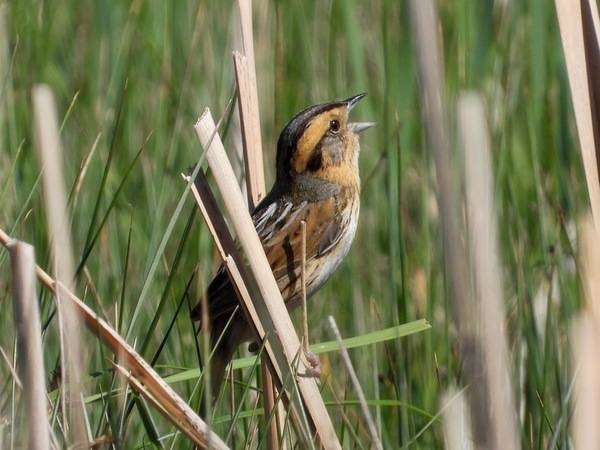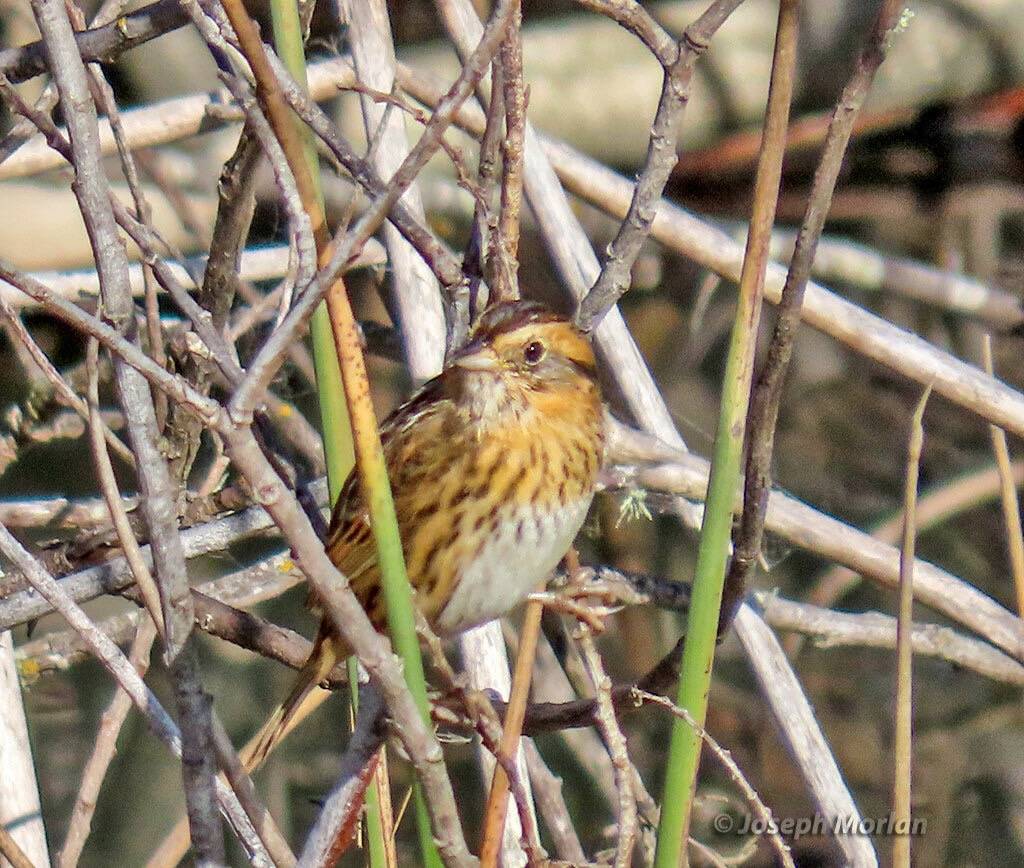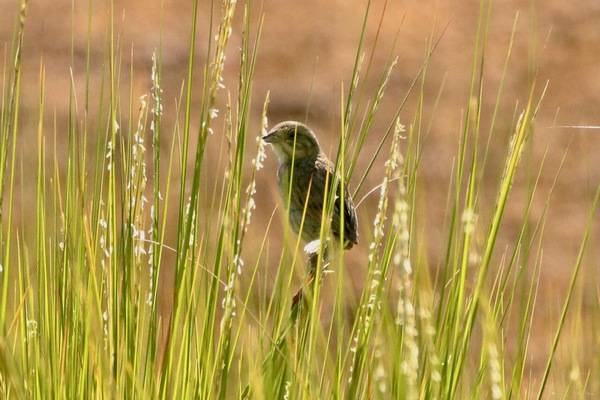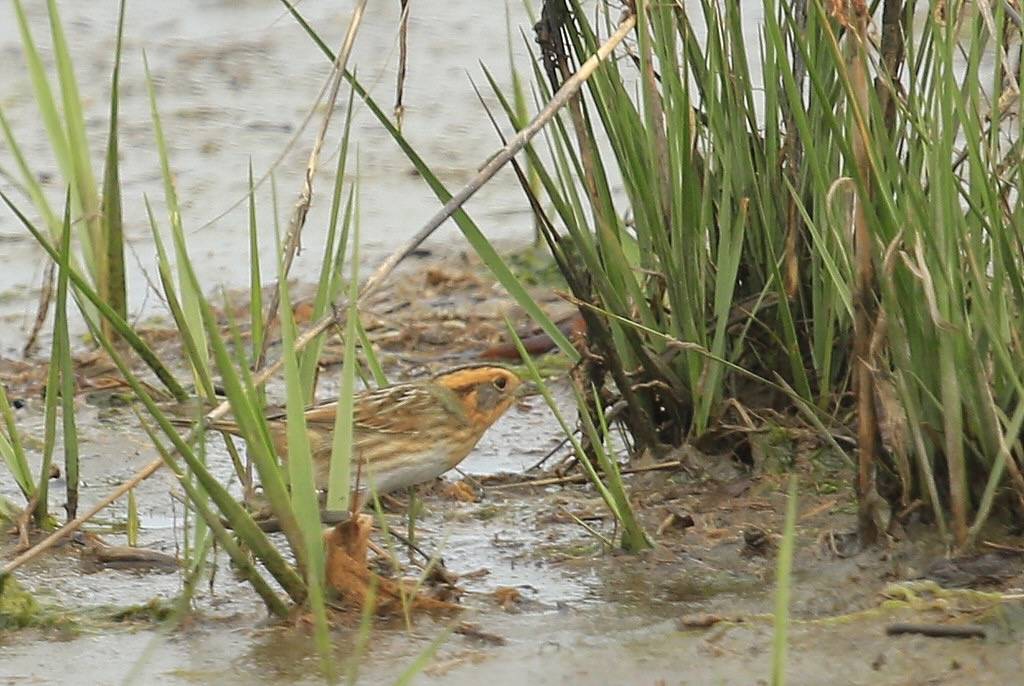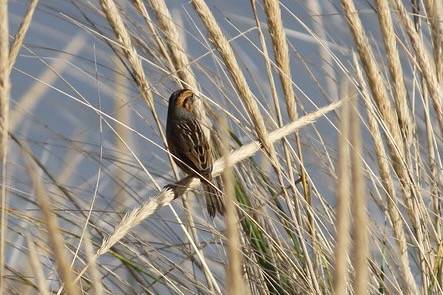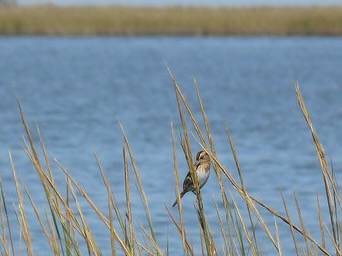Nelson’s Sparrow
Available data from 2002 to 2023 indicate that Nelson's Sparrow is a rare visitor to Salter Grove. It was observed just once in marsh vegetation along the southern arm of the breakwater in late October of 2020, and was likely a migrant on its way to coastal marshes in the southeast of the United States.
There are three disjunct breeding populations of the Nelson's Sparrow, all preferring to nest in grassy areas within wetlands. The Atlantic population inhabits coastal salt marshes from Quebec and Nova Scotia south to Maine. The interior breeding population is divided between the freshwater marshes of the Northern Great Plains, and the coastal marshes along the southeastern portion of Hudson Bay.
Nelson's Sparrow can easily be confused with its sister species, the Saltmarsh Sparrow, an equally rare visitor to Salter Grove. Both species favor dense marsh vegetation for breeding and stopovers during migration, so it is a challenge to observe, much less distinguish one sister species from the other any time they co-occur.
Both sparrows have bright yellowish-orange plumage in the head area. However, the orange tinge in Nelson's Sparrow continues down the breast to end at a distinct white belly whereas the underparts of the Saltmarsh Sparrow are more buff and lack a clear breast-belly boundary. Nelson's Sparrow has thick blurry brown streaks on its breast and flanks as distinct from those of the Saltmarsh Sparrow which are thinner, crisper, and darker.
Nelson's sparrow was once lumped together with the Saltmarsh Sparrow as the Sharp-tailed Sparrow. In 1995, the American Ornithologists' Union separated the two species in its Checklist of North American Birds on the basis of differences in song, morphology, and habitat. Subsequent analyses of mitochondrial DNA indicated that the two species were probably separated some 600,000 years ago by glaciers during the Pleistocene into an inland population and a coastal population.
Since the glacial separation, Nelson's Sparrow has become a specialist of freshwater wetland while the Saltmarsh Sparrow is a specialist of tidal salt marsh. Both species nest on or near the ground but when Nelson's Sparrow nests in salt marshes it is prone to losing eggs and nestlings during extreme high tides. In contrast, the Saltmarsh Sparrow is more successful because the timing of its reproductive activities have adapted to the bi-weekly inundation of the nesting habitat.
For more information:
https://www.allaboutbirds.org/guide/Nelsons_Sparrow
https://www.audubon.org/field-guide/bird/nelsons-sparrow
https://animaldiversity.org/accounts/Ammodramus_nelsoni/
https://blog.aba.org/2015/06/think-you-know-sharp-tailed-sparrows-thank-again.html
https://en.wikipedia.org/wiki/Saltmarsh_sparrow
https://www.ncbi.nlm.nih.gov/pmc/articles/PMC6912898/#:~:text=Although
https://www.youtube.com/watch?v=VC1gSPVXXPw


